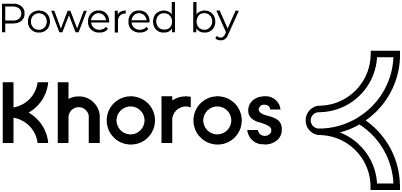- Dynatrace Community
- Ask
- Automations
- Percentage-based Thresholds for Site Reliability Guardian
- Subscribe to RSS Feed
- Mark Topic as New
- Mark Topic as Read
- Pin this Topic for Current User
- Printer Friendly Page
- Mark as New
- Subscribe to RSS Feed
- Permalink
03 Jan 2025 05:53 PM
When we used keptn for Quality Gates, we were able to set SLIs that were percentage-based - things like "if response times have not risen more than 5% from previous values, pass" or "if failures haven't risen more than 3% or by 100 flat, pass". These are very similar to how we can define anomaly detection today.
We have traffic that significantly varies throughout the day and between different days of the week, so using static thresholds does not work effectively. I cannot determine how to do this with SLOs. I tried using the auto-adaptive feature of the SRG, but it's still using a static threshold as it learns.
This has created some issues - one is that it learned an error rate of 0%, but then the SRG ran and had a single error in 10,000 requests and failed (the interface still showed 0%, I had to look at the query to see it was rounding the 0.0001%) which I would not want. Another is that it learned Saturation based on a couple runs later in the day, then failed when run in the morning when we are busier and the application is consuming more resources.
Being able to do this as a percentage comparison (how does the application compare to what was running just before the SRG ran) is much more useful in our context. How can I accomplish this?
Solved! Go to Solution.
- Labels:
-
site reliability guardian
- Mark as New
- Subscribe to RSS Feed
- Permalink
06 Jan 2025 01:05 AM
Hey @brianrutherford
Would something like the following be what you're looking for?
timeseries avg(dt.synthetic.browser.availability), avg(dt.synthetic.browser.duration), by:{dt.entity.synthetic_test}
| filter contains(entityName(dt.entity.synthetic_test), "nameFilter")
// Fetch timeseries for validation timeframe
| lookup [timeseries avg(dt.synthetic.browser.duration), by:{dt.entity.synthetic_test}, shift:-7d
| filter contains(entityName(dt.entity.synthetic_test), "nameFilter")], sourceField:dt.entity.synthetic_test, lookupField:dt.entity.synthetic_test
// Fetch timeseries for comparison timeframe, in this example it's -7d
| fields
`7d duration change` = ((arrayAvg(`avg(dt.synthetic.browser.duration)`) - arrayAvg(`lookup.avg(dt.synthetic.browser.duration)`)) / arrayAvg(`avg(dt.synthetic.browser.duration)`)) * 100
// Find the percentage change in the average of the timeseries
| fieldsAdd `7d duration change` = if(isNotNull(`7d duration change`), `7d duration change`, else:0)
// If there is no data when the comparison happens it returns null, this line ensures it returns 0 instead of null
| fields `7d duration change`
// Return only the comparison field as that is all we need.
- Mark as New
- Subscribe to RSS Feed
- Permalink
07 Jan 2025 06:32 AM
Hello @Fin_Ubels ,
very interesting approach. Thanks for sharing it.
I`m I right that the accepted percentage (7d duration change) is then defined as static threshold?
E.g.:
Warning if result: 3%
Fails if result: 5%
- Mark as New
- Subscribe to RSS Feed
- Permalink
14 Jan 2025 03:43 AM
Hey @JohannesBraeuer
If I understand the original post correctly then yes, you'd then define a static threshold. That static threshold would be the percentage change over time that is unacceptable. In my above DQL that would be over 7 days but it could be over any timeframe.
The downside to the above approach is that if it only get's 2% worse every time, but it does get worse every time consistently, then that performance degradation could fly under the radar and compound. So alongside the above approach I would recommend also have a static threshold on the underlying timeseries without doing a timeframe comparison so that there is a hard limit.
Featured Posts
